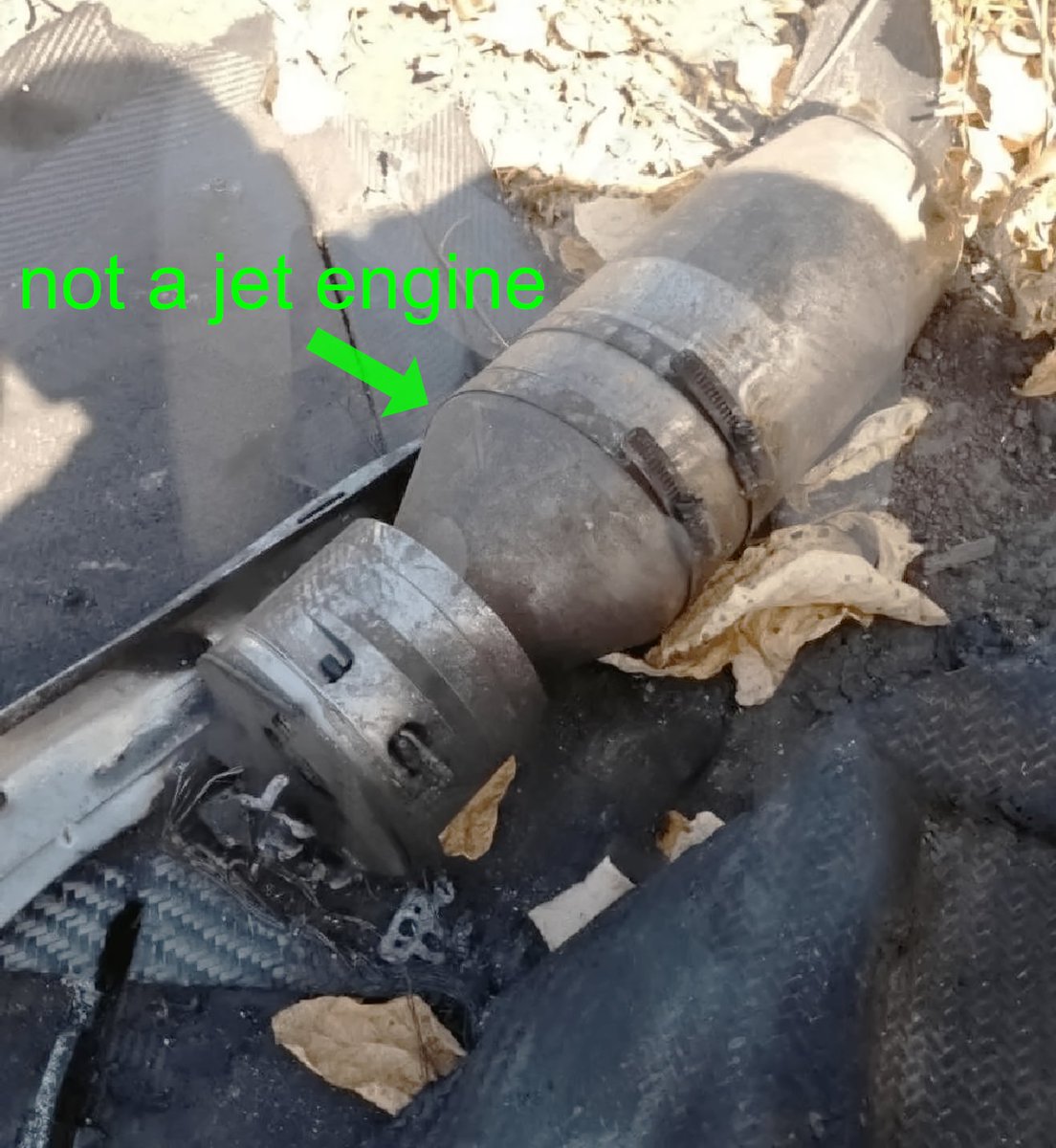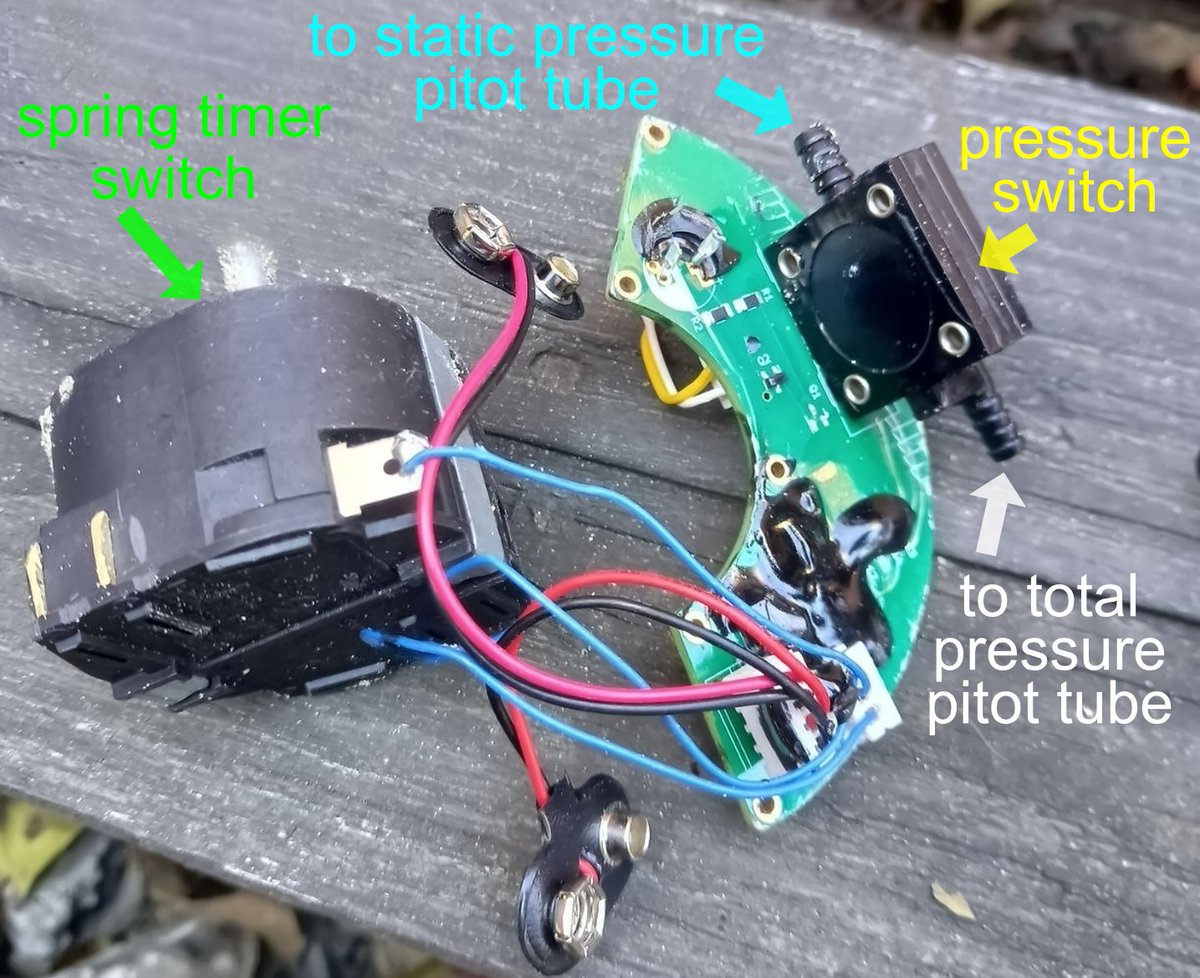1. A curious Ukrainian drone that crashed in September, 2024 was widely reported in russian media. Although various folks claimed this wreckage showed the remains of a jet engine, things did not look right. 

2. Here is a closer view of this object. The trouble is that most jet engines used in drones do not look like this. If not an engine, what is this? The following photographs will (partially) explain what this is. 

3. This is a rare photo showing an intact example of this jet-powered drone. Wing span is roughly 3 m (10 feet). The airframe is made from carbon fibre. The overall design is really intriguing. 

4. With covers removed, the right bay holds a flight controller & radios. Note the 2 adjacent antenna connectors. Left bay holds fuel & engine management systems. The jet engine is in the middle and has extra thermal insulation. 

5. The engine is a model SW400pro made by the Chinese company Swiwin. It’s about 15 cm (5.8”) in diameter, giving an estimate of the drone’s size. In some photos it looks like the smaller SW300pro (possibly both are used). It burns 12 L (3.2 US gallons) of fuel in 10 minutes so cannot fly very far.

6. The thing that some folks thought was an engine appears to be a warhead. It is about 28 cm long and 11.5 cm in diameter. Curiously, two hoses lead from the warhead to the pitot tubes. 

7. The boot in this photo provides a better sense of the warhead’s size. The tubes are colour-coded: likely one is total pressure and one is static pressure. There are wires but it is hard to sort them out from this photo. The “not sure” part may be a switch. 

8. The warhead has a nice casting containing electro-mechanical components. Two 9-volt batteries provide power. An electrical connector likely goes to the external wires. Unexpectedly there is a wind-up timer switch, model MI2, made by Faucigny Instruments. 

9. Here is a better view of the mechanical timer. Also shown is a differential pressure switch, model DesignFlex PSF100A, by World Magnetics. This connects to the pitot tubes and switches at pressure of 3” water, possibly to arm only once the drone is flying. 

10. One of the drone’s bays holds the battery and a Swiwin engine control unit. Other than a Taoglas (possibly Iridium) antenna, there is nothing obviously unusual. The opposite bay is a different story. 

11. There is a lot going on here. The flight controller is a common CubePilot Orange+ that is connected to a (fancy) PowerBox SR2. GPS is a Sparkfun (really?) u-blox NEO M9N. There is also a Matek magnetometer. Hidden in the rear is a heap of power-management stuff. 

12. There is no sign of a camera on this drone. Curiously, there are two communication systems. There is a common RFD900 long-range radio modem. There is also a RockBlock Iridium satellite modem but it’s not clear how this would be used given its very low data rate. 

13. There are no custom electronics. Zero. Everything inside this drone can be bought from hobby stores. All of it. Regardless, whoever, put this drone together really liked their CAD software. Everything is nicely planned, well-made and labelled. 

14. A recent photo shows the wiring harness from this jet drone along with a flight controller made by the American company, Aevex Aerospace. It is extremely unlikely the jet drone is made by Aevex. These components are almost certainly from different crashes. 

15. So then, who made this jet? One hint is the modem case & pitot tube mount look like they were printed on a powder-bed 3D printer. It’s someone who likes mechanical engineering and knows how to work with carbon fibre but are less keen on designing circuit boards. 

16. Mechanically, this is a very interesting drone. However, its maker remains a mystery.
If you liked this thread, please bookmark it and repost as a quote. Also, please see my previous threads listed under “highlights”. Respectful comments are always appreciated.
If you liked this thread, please bookmark it and repost as a quote. Also, please see my previous threads listed under “highlights”. Respectful comments are always appreciated.

17. (ps) Please comment if you know more about the warhead. Regarding Aevex not being the maker of this jet, it is difficult to imagine an American maker of military drones using a Chinese engine. Also, labelling & general design of the jet is very different from the Disruptor.
18. (ps) For completeness, the thing labelled “not sure” in #8 is likely a detonator like those shown here. This warhead also resembles (roughly) the warhead used in a Hellfire missile. 

• • •
Missing some Tweet in this thread? You can try to
force a refresh






















